The Hare of Hermes
Lunar Tunes, Mary Maladies, and the Bottomless Rabbit Hole of Death
Back in June of 2023, I wrote a four-part series called Rainbow Blight. My goal was to shed light on an ancient religion and its modern grooming techniques, which span from kindergarten to the old folks home.
TLDR;
What I found was that the shared theme of the unending LGBTQIA+ acronym isn’t Sex, but Death. Or, to be more accurate, it is Anti-Life and Anti-Future. We could even call its victims Anti-Sex, preferring lame parodies and simulacra to the Real Deal.
Victims, you say?
Not all of them. I’m sure there are vampires out there; sadistic freaks who know exactly what kind of deep spiritual and biological carnage they cause. They pass down their moral insanity like a plague, infecting the wounds they rake open on the young and the weak. As we’ve seen in the Vatican coverup scandals, they’ll even commit these crimes with the Word of God in their filthy mouths. When the Westboro crowd chants, “God hates fags,” this is the breed that springs to mind.
Does that pardon their victims completely for future behavior? Well, that depends. Repentance is a bit like that old medical joke:
“Doctor, my arm hurts when I move it like this.”
“Well, don't move it like that!”
Forgiveness for error is available, basically free of charge. The only price is to repent and change your ways. We know from Christ that God hates sins, not sinners. The word “sin” comes from the Greek archery term, ἁμαρτία, meaning “to miss the mark.” The Father does not like to see us screw up, any more than a human dad wants to see his kid strike out. And we can conclude that God finds faggotry especially annoying, since the archers are missing physical targets that are pretty clearly marked.
This blunder might even look comical, from our lowly human perspective (“Um, no. That doesn’t go in there.” ). Indeed, we often used it as fodder for comedy, before butt-piracy became sacralized in our disintegrating culture.
But I doubt God has a sense of humor about it. In fact, I think He would hate it even if it didn’t lead to biological dead ends. Some will say we only know this because it’s His Word, written down. Case closed. But our Father isn’t a madman or a fool. His rules make perfect sense, and there is plenty of evidence in the living world that reveals it. Even the wages of sin are often easy to observe, in the here and now.
We are given choice by our Creator. It is inherent in our design. Even in the Edenic arc of Genesis (which Gnostics will point to as evidence of their claims), choice precedes the fall and exile, just as Lucifer’s choice to rebel precedes his own exile. You say you choose to go on masturbating into bloody sewage pipes, you daredevil you? Sure thing, pal. You do you! Just don’t be surprised if you get hit with a dose of syphilis, Monkeypox, anal fistulas, adult diapers, and other nastiness.
Many of the same consequences apply to the kinky straights as well. Play stupid games, win stupid prizes. Or perhaps the better analogy is playing with matches: maybe we’ll come away without a scratch, maybe we’ll scorch our fingers, maybe we’ll burn the damn house down. Some of us apparently get more chances to screw up than others, here in the laboratory of the material world. But on the other side? There may well be a invisible debt piling up.
What about the sin of transsexuality? How does that compare?
By that I don’t just mean kinky gays and straights playing dress-up. I’m referring to the neo-gnostic claim of being “born in the wrong body”, increasingly made by the children of maniacal parents and reified by their quack doctors and other corrupt authorities.
Put aside the noise from neurologists, paid to staple on a pseudoscientific fig leaf. Even leave aside the biochemical fact that — as that twice-a-day right broken clock Alex Jones once averred — “They’re turning the frickin’ frogs gay!” It’s true that endocrine disruptors like atrazine trigger a wide variety of effects, including demasculinization, chemical castration, hermaphroditism, and, yes, even male-to-female sex changes. But in some ways, that’s just frogs being frogs (or keks being Kek, if you will).
Even Michael Levin could tell you that that a frog-soul is highly plastic, designed for radical shapeshifting. For instance, the juvenile tadpole looks almost nothing like the adult. Even sex-changes will sometimes happen spontaneously, from our perspective, without any help from the pesticide industry. Some breeds of frog are also lethally poisonous, or will summon demonic machine elves if you kiss them.
It also occasionally rains frogs. Just saying.
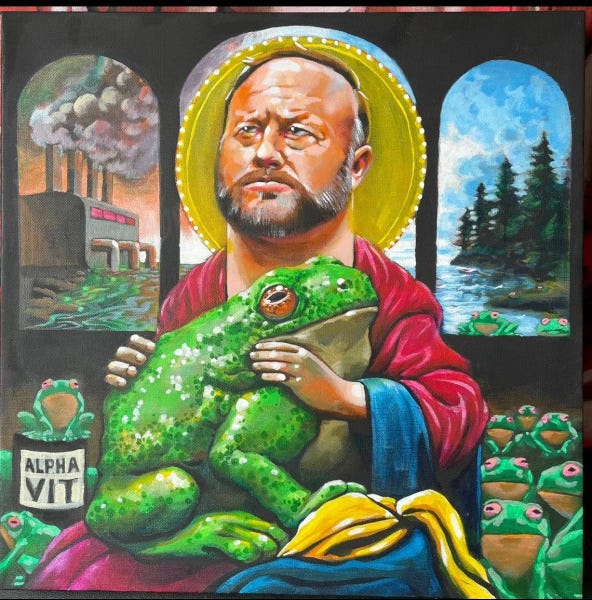
But people aren’t frogs. We cannot naturally shapeshift at will, or even with the assistance of fancy surgeries and potions. We are made as we are made, in God’s inviolable image, and He makes no mistakes in our creation. That’s why I believe the sin of transsexuality is more dire than the sins of many homosexuals and other kinky fetishists. The latter can be seen as rebellious against God’s material designs. But the former accuses Him of spiritual sin.
And yet the cultural muckety-mucks don’t treat it this way. Even many on the Right don’t quite seem to get the gist, blaming the “disease” of transexuality on the symptom of progressivism and its victim cults. One problem is we’re currently living through a Dark Age of inversion, in which powerful institutions of science have flipped cause-and-effect backwards for fun and profit. In time, if and when we right the ship, we’ll discover that even so-called “genetic mutations” are not the product of random chance, but, like thalidomide babies or gay frogs, can all be linked back to a discernably manmade (and sinful) cause.
I assume that the onset of so-called gender dysphoria is greatly influenced by a hydra of such hidden causes, including biochemical ones. But chemicals aren’t the only component of evil spells, and probably not the most important ones. The victim’s consciousness must be attacked as well. Satanic errand boys like Ed Bernays developed many of the popular techniques, still in use today. Some of those are very much in-your-face and obvious, such as the recent onslaught of media propaganda and legal chicanery. Due to the latter, masses have been led to believe the Trans Phenomena just sprang out of nowhere, all of the sudden.
Nope. We were groomed.
And by “we”, I mean all of us alive on the planet today. Our parents were groomed too, as well as our grandparents, dead or alive. We could say the process was slow and gradual, like boiling the frog. But I have another animal in mind. Two of them, actually.
But first: Let’s talk about sex!
The Two Hunts
There’s something I noticed about sexual dimorphism long ago, back when I was a young figure painter and portrait artist. I wasn’t saved, back then. Not washed in the blood of the Lamb, from what I could tell. I was just another wanderer in the dark woods. What light I could see was little more than pinpricks.
The human body was one of those pinpricks. They say boys tend to like objects and girls tend to like people. I was a fan of bodies, which I saw as a combination of both. I sketched them regularly as a young kid, even without living references. In my teens, I switched to models. Including nude models. Including females. Including females that I knew, in the “biblical” sense.
Looking back, I realize I treated them as objects, and therefore missed the mark by a country mile. I’ve also come to realize this: of all the glorious beauty and intellect discernable in Creation, the division of the sexes might be God’s most brilliant design, because it repurposes a destructive drive as a creative one.
There are many lifeforms on planet Earth, equipped with many different means of propagating more. These include methods of asexual and intersexual reproduction for the simpler forms (e.g. budding, fragmentation, self or cross-pollination, etc,) But as the complexity of the organism increases, the forms divide into recognizably male and female bodies. This correlation between complexity and division is mysterious, and my own theories about it aren’t fully formed. But it’s clearly evident in nature, and at multiple scales of observation. The more complex bodies have more options, in alignment with their more complex minds and souls.
One of the big choices a complex being makes is what to do with the Others: all those beings across the boundary of Self. This includes what to do with beings of the same species but the “opposite” sex. These beings, while familiar to the Self, also express many differences in form and behavior. Sometimes these differences are obvious and radical, other times so hidden or subtle that only highly trained sensors will detect them.
In all cases, all of us complex, sex-divided creatures can be said to both “alike” and “unalike.” The bodies are unalike-enough to identify at range, but also alike-enough to be recombined into novel creatures, that will exhibit aspects of both. How do we do this?
Through predation. We hunt.
The bodies collide. The fang sinks in. The arrow pierces the bullseye.
Game over.
But in the Hunt of Life, the game survives. The prey’s wound precedes the injury, and is shaped to accommodate the weapon. It even bleeds on a rigid schedule, a constant reminder of both its poetic analog and proper use. If you were trained to think of God as more Scientist than Artist, these dry facts should be enough to dissuade you.
As we grow in complexity, both as individuals and as societies, our hunts naturally become more complex too. At a certain point in development, we play games within games, and the line between predator and prey begins to blur.
The sexes of complex species tend to be physically asymmetric. The weaker human sex can be conquered by raw violence (rape), and she often will be in barbaric cultures, or in complex ones that have fallen into debauchery and decline. But in the ones that maintain order and hew to God’s will, a female might engage in mutual predation of her own, though far more subtle and wily than her male counterpart. But whatever the cultural spacetime rules might entail, the hunts for Death and Life continue unabated, for the simple reason that if they stop, everything stops.
The truth of the twin hunts is embedded in our language, too. “Carnal” shares its root with “carnivore” for good reason; in the Game of Flesh, sexual copulation is the flip side of the flesh coin to caloric consumption. For one thing, both games are played on the clock. The menstrual clock runs in the female body. The starvation clock runs for everyone. Owing to complexity, we can easily reset one but not the other.
Both hunts involve doorways, too. Death’s one-way door is the predator’s mouth, through which the prey is chopped and squeezed, stripped of nutrients, broken down by acids, and then voided. It is a simple door, made for a simple task, just as all destruction is much simpler than creation. The hunt ends in the sacrifice of one lifeform in order to sustain the other.

Life’s door is of a more complex construction, and swings both ways. Instead of taking the prey inside, the predator gives a part of itself across the threshold. What may eventually be given back the other way is more life, neither identical to the predator or prey nor entirely unique. A soul inhabits and ignites the recombinant flesh, which will eventually start its own hunts. By this cycle, more dynamism and complexity is spread throughout Creation. There might even be a Little Death involved.
We could say that both forms of predation are required in order for observable reality to persist. But we can also call the Death Hunt for calories a somewhat tragic necessity, especially when compared to the Life Hunt for sex. As a red-blooded American male, I can confirm that I’d gladly pass up a five-star meal for a night in with a beautiful gal.
On the other hand, I’m sure that fancy meal would taste much more delicious if I’d hunted and killed it myself. While I understand the utility of modern meat production methods, I think it was a mistake to drain the Death hunt of both its glory and its pathos. We still hunt animals in the modern West for practical reasons, but those mostly have to do with population control or thrift.
The tragedy of the Death Hunt is diminished further due to the more radical differences in form between the predator and the prey. Alike is not meant to hunt alike. That’s called “cannibalism” when we hunt for calories.
What do we call it when we hunt for orgasms?
Last I checked, they were calling it “pride.”
Of Bugs and Bunnies
When we see like prey on like, it naturally sickens and disturbs us. And the more complex the cannibal, the worse it feels. I once saw a white mouse in a cage devour two of her own squirming pink newborns. I didn’t stick around to see if she went for thirds. But mice are far from the most complex cannibals in the mix.
I often try to put myself in the mindset of the conquistadors when they sailed to Mesoamerica. Some of those men must have assumed they’d landed on the far shores of Hell (and rightly so). Even when we see a different complex species do it, it disturbs us in a place beneath all language. When a lion or chimpanzee gnaws on a rival male’s offspring, we are reminded why their forms figured heavily into the old mythopoetry of monsters.
The revulsion compounds when both the Life and Death hunts are intertwined, which is why some lifeforms remain staples of our artists’ horror palettes despite posing almost no physical threat to us. Chimps and lions can still tear us to shreds today, if they catch us naked at close range. But their horror has been somewhat drained by modern weaponry and methods, as well as their overall population decline. What is nightmarish isn’t always physically threatening. There are metaphysical horrors, too, which threaten to harm our understanding of our Creator and His plan.
The fact that relatively tiny arachnids and insects still feature heavily in our horror imagery speaks to their asymmetric power as symbols. Some of their behaviors are even stranger than their bodies, implying weird minds and perceptual methods that cross multiple boundaries of Being itself. Are army ants networked robots? Is the honeybee the organism, or is it the hive? We could say the spider is similar to the fisherman or trapper in certain regards. But does a fisherman give birth to a hundred offspring that devour him?
There are probably a host of other reasons for our revulsion. For instance, a domicile filled with creepy-crawlies suggests an overall tendency towards disorder and decay, and carries the implication of real physical threats like an excess of harmful microbes. But I think their hyper-fecundity might be the key to why bugs bug us so much. The sight of one lone cockroach fills you with dread: where you spot one in the open, that means whole legions of his buddies are probably lurking in the cracks.
In an economy overrun by the Cult of Grow or Die, the notion of abundance as a kind of horror doesn’t necessarily compute. More is better, right?!
Except when it isn’t. Except when the animal is mostly unseen and uncounted, and the sudden appearance of more can translate to total loss, ruin, and death.
While the people pressed upon him to hear the word of God, he was standing by the lake of Gennes′aret. And he saw two boats by the lake; but the fishermen had gone out of them and were washing their nets.
Getting into one of the boats, which was Simon’s, he asked him to put out a little from the land. And he sat down and taught the people from the boat. And when he had ceased speaking, he said to Simon, “Put out into the deep and let down your nets for a catch.”
And Simon answered, “Master, we toiled all night and took nothing! But at your word I will let down the nets.”
And when they had done this, they enclosed a great shoal of fish; and as their nets were breaking, they beckoned to their partners in the other boat to come and help them. And they came and filled both the boats, so that they began to sink.
Luke 5: 1-7 (RSV)
An abundance of roaches probably won’t sink your boat, but it could definitely send your property values down to Davy Dow Jones’ Locker. But it gets even worse when you consider the human version of bug-fecundity.
A household with ten children might be a huge hassle, even in economies that supported them. A household with five hundred children is strictly nightmarish. No parent could devote the love and attention required to raise such complex creatures into human adults. We would instead resort to Huxley, to factories of human-shaped flesh that barely even parodied out Creator’s intellect and beauty. The result would be every bit the offense to God as the queer renting himself out at the glory hole.
And yet, everywhere we look, we see tiny, robotized monsters who fit the bill. They murder lovers mid-coitus, spawn legions of ravenous clones, screw and cannibalize children, parents, siblings and mates.
“Why does God create such horrors?” My best guess would be that some of His creations demonstrate how we shouldn’t live as well as how we should. It doesn’t seem to be an accident that the creatures who regularly prey on their own kin also tend to look extremely alien in form. Ìt also makes sense why their forms gross us out, and populate our nightmares.
We don’t even tend to eat these more extreme xenomorphs (and in certain cases, like the black widow, doing so might be the last mistake you’ll ever make). While there are many variations dependent on culture and/or climate, there seems to be a sweet spot when it comes to our Death hunt habits. We tend to aim for prey that is unalike enough to ward off thoughts of cannibalism, yet alike enough as to be somewhat familiar to our own. There are some very big exceptions of course. Fish and other underwater dwellers became a staple of human diets even before we’d mastered sea travel (and, as we saw in Luke’s passage above, even sailors can catch a glimpse of the horrors of sudden abundance).
From a purely utilitarian standpoint, we could certainly incorporate many species into our diets, even discounting crabs and lobsters. But although bug-eaters have always existed, and though many wealthy elites say ve vill eat ze bugs (or else), the taboo persists.
The rules of bug hunts don’t just look alien or kooky. They look like evil incarnate. We know that their form of abundance means our pestilence, decay, and death.
Before we get there, I’ve got a confession to make: I’m a big fan of rabbits.
Oven-roasted, pan-fried, with sauce or naked. I even like rabbit stew, which I tasted on a visit to a friend down in Birmingham ages ago.
Dame Bisone might even be a bigger fan than me. She orders it whenever she spots it on a menu, mostly because it’s incredibly rare for Yankee restaurants to serve them. She buys whole uncooked rabbits, too, but the only spot she can find them with any regularity is Chinatown (and when that happens, I am given the honor of beheading and butchering the corpses in the sink). But the Chinatown supply is usually low, and her prospects of getting one at a decent price dim.
Why is that?
When it comes to the twin hunts of complex mammals, rabbits appear to be apex predators of one and perfect prey for the other. Yes, they are fast and agile in the wild, and dig pretty good hideouts. But we have ways of dealing with their kind.
And even absent a good 10/22 carbine, we have rabbit farms. You’d think such a business would be a money-printing machine, anywhere you planted it. Low feed costs, minimal care, and a bonanza of meaty output that multiplies like…
Well, like rabbits.
Their reproductive rate was so blazingly fast, Pliny and other ancient thinkers figured them for hermaphrodites:
Archelaus states that a hare is as many years old as it has folds in the bowel: these are certainly found to vary in number. The same authority says that the hare is a hermaphrodite and reproduces equally well without a male. Nature has shown her benevolence in making harmless and edible breeds of animals prolific. The hare which is born to be all creatures’ prey is the only animal beside the shaggy-footed rabbit that practises super-fetation, rearing one leveret while at the same time carrying in the womb another clothed with hair and another bald and another still an embryo.1
Pliny’s notion of rabbits as the perfect prey and food source is probably much older than his works. As the world’s true apex predators, we tend to notice fat and protein factories that breed like insects. It doesn’t hurt that they look like your daughter’s stuffed animals, and aren’t much more dangerous than those.
They’re hard to catch, sure (“Quick like a bunny!”). But if you manage to catch a few and fence them in, you’ve got yourself a meat bonanza in the making. You’ve become the Hunter of Life and Death, simultaneously. You’ve essentially built an orgy palace, from which you can crush lives and reap rewards at your leisure.
In fact, you’d think bunny mansions ranches farms would be pitched as a worldwide panacea, a cure for hunger in desperate lands. The WEF overlords proclaim “You vill eat ze bugs” to the sound of crickets. Why not “You vill eat zee wabbits”? I’m guessing that would be a much more palatable solution.
Let me guess what you’re thinking:
Well, Mark, the reason you don’t see rabbits used as a major food source is partly regional in nature (e.g. Y’all dumb city folk up Nawth don’t know good eats). But it’s mainly due to a decreased market demand overall.
Tastes change over time for a variety of reasons, including class mobility, status anxiety, the lengthening of supply chains, international trade and more. People have a lot more Death Hunt options, now, and rabbits simply aren’t high up on most folks’ hitlists.
Yeah, yeah, yeah. That all makes sense, and surely plays some supporting role. But I have a different answer, a refrain which should be familiar to you by now:
We were groomed.
Not only that: we were groomed by the same cult responsible for the tranny craze, the “furry community”, the vile MAPs, and every other existing and forthcoming stripe on the Rainbow Flag.
It’s the cult of the inverted covenant, the one that preaches, “Be fruitless and reduce,” under the guise of kindness and understanding. It’s the cult of material abundance papering over a spiritual black hole. Their ranks are rife with child rapists and murderers, who hunt and cannibalize the weakest of their own species in every conceivable way. As predators of Life and Death, their favorite tactic is camouflage.
But forget about those jerks for now. Let’s watch some old cartoons!
If I were a smart man, this is where I would stick a paywall. Lucky for you, I’m stupid.
Instead, I’ll pause here briefly to thank my amazing paid subscribers, whose gracious patronage takes a bit of the financial sting out of my writing work. As I’ve mentioned, The Cat Was Never Found is still operating at a “loss” in terms of time investment versus receipts. If it were a business venture, I’d tell you all to bail and file Chapter 11.
So if you see fit to contribute, it won’t be to scale paywalls, as I don’t erect many of those. What you will get is more words from me, in a more timely fashion. If that sounds like a good deal, please…
Now: back to business.
Lunar Tunes
For those keeping score, here we have a male rabbit dressed up as female human prostitute, flirting with a human male who either has the world’s worst eyesight or its most debased sexual kink. Whatever the case, his flaccid hunter’s cap magically elongates and stiffens, to complement the rifle in his lap.
Daffy spies this encounter from deep cover, and is rightly outraged. Putting aside his own safety, our Based Bird confronts his would-be killer in an attempt to save his soul from a Double Rainbow perdition. “Surely you’re not gonna fall for that old gag!” he scolds.
But the hunter can only swoon, spellbound by his degenerate lust. Apoplectic, Daffy turns to the crossdressing beast. “Out of sheer honesty,” he lisps, “I demand that you tell him who you are!”
Instead of confessing his sins, the rabbit murderously betrays him.
Cue gunfire. Cue laughter, too.
Bugs is painted as a comedic antihero. A streetwise hustler who survives by his wits. A lovable rogue, who breaks every rule in the book with a sly wink, and exposes his opponents as a bunch of rubes, prudes, and buffoons who deserve to lose.
But transport his actions across the veil of the flickering screen, and he looks like something much older and darker. Bugs becomes a trickster god who can conjure costumes, weapons and other apports from thin air. A manipulator who traps you in word games and moral mazes. A prankster who mocks you with the obviousness of his jokes and traps. A false friend who casually betrays you for survival, advantage, or just for fun.
And generations loved him for it.
Hares are ancient symbols of fertility, abundance, and renewal, with deep roots in multiple religious and magical traditions. But the fertility symbolism is sometimes worn as a mask, to mock the Life Hunt while quietly inverting it.
In these esoteric mystery cults and secret societies, they emerge as liminal figures—shapeshifters bridging the divine and demonic, the sacred and profane, featuring heavily in initiatory rites, alchemical metaphors, and folkloric whispers, sometimes inverted into harbingers of chaos, deception, or forbidden desires. In the Dionysian mysteries, hares symbolized the wild, mercurial energy of the god Dionysus. As nocturnal creatures tied to lunar madness, hares evoked the maenads: frenzied female shapeshifters who tore apart victims during ecstatic rituals. This version of the hare carried over into the witches’ sabbaths of the medieval and later periods, as demonic familiars and shapeshifting targets…
Blah, blah, blah. I’m guessing you already know much of this, if only via osmosis. Just like you know about the Chinese Zodiac rabbit, or their Jade Rabbit on the Moon. Just like you know the Easter (Ishtar) Bunny is the egg-laying mutant Osterhase from Germanic heathen lore. Just like the stage magician’s archetypal trick is to produce one from thin air. Hares and rabbits really get around, and they tend to leave a spiritual impression wherever they go.
But I ran across an interesting story during my research, which sparked a few new thoughts on the souls of leporidae. The Wonderfull Discoverie of Witches in the Countie of Lancaster was written in 1613 as contemporaneous record of the famed Pendle Witch Trials the year prior. This excerpt is from the confession of James Device, one of the accused witches. In his testimony, he described a supernatural “thing” he met on the way home from church services shortly before Easter (emphasis mine).2
HE saith, that vpon Sheare Thursday was two yeares, his Grand-Mother Elizabeth Sothernes, alias Dembdike, did bid him this Examinate goe to the church to receiue the Communion (the next day after being Good Friday) and then not to eate the Bread the Mini∣ster gaue him, but to bring it and deliuer it to such a thing as should meet him in his way homewards: Not withstanding her perswasions, this Examinate did eate the Bread: and so in his comming, homeward some for∣tie roodes off the said Church, there met him a thing in the shape of a Hare, who spoke vnto this Examinate, and asked him whether hee had brought the Bread that his Grand-mother had bidden him, or no? whereupon this Examinate answered, hee had not: and thereupon the said thing threatned to pull this Examinate in peeces, and so this Examinate thereupon marked himselfe to God, and so the said thing vanished out of this Exa∣minates sight.
Translation: A young buck named Jim attends church on Holy Thursday, four days before Ishtar Easter Sunday. His grandmother (also a witch) has commanded him to take the Eucharist without eating it, then give it as an offering to a certain entity that will meet him on the way home.3 Well, Jim eats it anyway (because fuck her, I guess).
Then a couple of hundred yards from the church door, a hare-like demon pops up and asks for the bread. Jimbo says he ain’t got it, and the demon threatens to tear him apart, limb from limb. Jim makes the sign of the cross, and poof! Evil-bunny-thing vanishes into thin air.
Is it just me, or is there something a bit loony about this particular tune?
Cryptids like the Osterhase are deeply rooted in pagan traditions that predate their literary equivalents by unknown spans of time, and likely trace all the way back to Old Babylon. They are transactional beings, offering trades of goods and services in exchange for specific behaviors or offerings. They have lingered on in that role long after the heathen cults that divinized them were extinguished, syncretized, or driven underground. And much like the holes the animals inhabit, “underground” was never very deep.
The Easter Bunny is probably the most widely recognized survivor of the purge, syncretized with the “holiest day” of the Christian calendar (which itself is syncretized with Ishtar’s day of adoration). I guess this strategy made a lot of sense at the time to many Christians. You could say the themes of fertility, renewal and regeneration superficially align with Mary’s virginal conception and Christ’s resurrection, if your tilt your head and squint.
But much like the corruption of Christmas can be traced back to syncretism, so can the corruption of Easter Sunday. Like the jolly old elf in red pajamas, the Osterhase brings gifts to children. Not just brightly colored magic eggs, but chocolate, candy, and other treats. But unlike Santa Claus, or even the Bunny’s original Germanic form, I recall no transactional requirement, no admonition for good behavior. It’s just abundance, apparently, with no strings attached.
Even Bugs gets in on the action there.
He wants an easteregg! He wants an easteregg! He wants an easteregg!
The malevolent infant of “Easter Yeggs” is one of the few characters that actually poses a stiff challenge to Bugs, getting the better of him for most of the film. Bugs still wins in the end (obviously), this time by weaponizing the tiny monster’s furious hunger for “stuff” against his archenemy, the Hunter.
But note that Bugs is essentially wearing a costume throughout this episode. He isn’t the true Osterhase, who lies exhausted somewhere off screen. Bugs is merely taking on the appearance of the Easter Bunny. He is “a thing shaped like a Hare” that speaks like a man, and is limbed like one. He has humanoid hands, with opposable thumbs.
How else could he tear his enemies to pieces?
And so, in one of Americana’s most iconic characters, we also see into the darker corners of reality. We catch glimpse of the secret societies and mystery cults whose various projects seep into our eyes and conscious minds, corrupting our imaginations and invading our dreams.
A Hermetic hare, approved for All Audiences. A toothy Thoth, conjured by the sorcery of industrial art and commerce.
And most importantly: Bugs always wins.
He makes it happen. And even when he doesn’t, good fortune shines. He can lie, cheat, steal, and even kill without comeuppance, so long as his victims are the “wrong” kind of folks.
It’s almost like he was drawn that way.
What’s up, Doc?
All four of the Warner Brothers were Polish Jews, who anglicized their original surnames (Wonsal) upon their arrival in the States. They changed their first names as well: Harry was Hirsz, Albert was Aaron, Sam was Schmuel, and Jack was Itzhak. Such name changes were common enough during the late immigrant waves of the 19th century, especially for Eastern European and Russian Jews.
What wasn’t so common was the fact the Warner Brothers were also freemasons. Jack/Itzhak was a publicly verified member of Mount Olive Lodge No. 506 in California, and some sources also link all four brothers to the North Hollywood Masonic Lodge No. 542. The voice of Loony Tunes, Mel Blanc, was a 32° Scottish Rite Mason and Shriner. From street-level nickelodeons to a bidding war that involves the son of the second richest man on planet Earth. You might say the stars came into alignment over Termite Terrace.
So which element was more important? Their Jewry or the Freemasonry? Kabbala or Alchemy? Which was the dog and which was the tail? Or was this yet another syncretic project, adapting to the times. Like its political homunculus, progressivism, devil worship is highly adaptable.
Before I give my answer, let’s take a closer look at the Golden Age of the Loony Tunes, generally understood as the period between the late 1930’s through the 1950’s. It was during this period that their most recognizable (and profitable) characters were solidified into essentially the same versions we see today.
Bugs Bunny, the Road Runner, Tweety Bird, and a few other Lunar Tunes “heroes” are all prey-predator hybrids and liminal tricksters, who disguise their power inside illusions of innocence and weakness. They tend to win through trickery and deceit, luring their predator-prey into a false sense of security or confidence. Often their tricks involve magic, seemingly pulling mallets, paint cans, costumes, dynamite, and just about anything else you could imagine out of thin air. Weirdly, the antagonists are often limited by more pragmatic and mundane means. Wile E. Coyote shops Acme by mail order. Elmer Fudd uses shotguns and rifles.
So we’re not just dealing with anthropomorphic animals or human-hybrids. The cast of loony antiheroes are magical beings, with magical powers. But even among them, Bugs is special. He is the most popular of all the Loony Tunes characters, and I suspect he was specially contrived or adapted for that role, due largely to the symbolic and ritual significance of his species.
Bugs is positioned as the archetypal Urban American; streetwise and wisecracking, manipulating the hayseeds and rubes. In the aftermath of WWII, I think he also rose to become the postwar archetype of America itself: a globe-spanning juggernaut and trickster god, who can betray allies and break all rules with a wink and a grin. While some of his antics occasionally get him in trouble, his lies and schemes always work out in the end, leaving his victims confused and humiliated. Sometimes, he even leaves them dead, by luring them into acts of self-destruction.
The clip above is taken from the short film “Show Biz Bugs”, produced in 1957 during Warner Bros.’ late Golden Age. In it, Daredevil Daffy commits suicide by ingesting a series of volatile components (nitroglycerin, gunpowder, uranium 238) then swallowing a lit match.
Following the lethal explosion, and the crowd’s exhortation for more, his ghost receives an Oscar-like award called an Oswald and utters the line, “It just goes to show you. You’ve got to kill yourself to win an Oswald in this town.” This is followed by an extended gag, where even in his “victorious” death, Bugs manages to one-up him.
When I first dug up this clip, I was confused. I have a somewhat eidetic memory when it comes to certain art, and this wasn’t how I remembered the ending. Was I a victim of the so-called “Mandela Effect” of false memories?
So I did a little more digging. And it turns out there is indeed at least one alternate ending to the story.
In this version — the one I recalled — there are a couple of minor changes, followed by a major one. Daffy still blows himself up, but now gasoline is added to the dire formula. After Bug’s delivers the same line — “That’s terrific, Daffy! They loved it! They want more!” — we cut to a shot of Daffy’s spirit, still dressed as Satan, ascending into heaven.
“I know, I know,” the specter says. “But I can only do it once.”
If this were a René Girard lecture, he might call Daffy the victim of a mimetic rivalry, in which his escalating desire for the bunny’s external validation ultimately destroys him. This is not a Girard lecture, however, and I don’t count myself a fan of his. One of the reasons his theory doesn’t fit is because Daffy is never validated in life, and all his labored attempts to gain it fall flat. There’s nothing to whet his appetite, only rejection and humiliation unto death.
Bugs, on the other hand, is an effortless virtuoso. He can win the crowd’s favor for doing identical work, or even for doing nothing at all. He can also win it for being a sadist, as he does when he “accidentally” carves the duck in half during a magic routine. Much like America herself, publicly pretending to screw up the trick is often the trick’s hidden purpose. Cue false flags, color revolutions, “forever wars” that somehow always end in tragicomic humiliation.
Of course, that’s only been true for a certain definition of “America.” The other America is a synecdoche: a dog-wagging tail composed of select public operators and covert engineers who prey on and parasitize their fellow citizens alongside everyone else. We grew up slowly boiling in a stew of their lies.
One popular lie was that 1950s America was an era of idyllic blandness, sexual repression, and stifling conformity. In truth, the grooming engines were humming right along, carving subtle pathways in young minds. Bugs Bunny is a tribal scar on the American psyche, passed down from generation to generation like a rite of passage. For this group, it’s always Duck Season, or Elmer Season, and we are all the daffiest of ducks and fuddiest of duds. Inferior “profane” creatures, to be gaslit, toyed with, extracted from, and betrayed, all with a wink and a grin from a demon-thing that had been granted animation and pseudo-life.
And so, the Lunar Songs of the Masonic Hollywood Jews were not just amusements. They were magical spells, transmitted from high speed graven images directly into retina, carving electrical routes in brains that would lead the mind down Left Hand Paths to Mystery Babylon.
“What’s up, doc?” is “What is your desire?” asked to the one guarding the way. “More light,” is the answer. More gnosis.
Think I’m crazy? Loony as a rune (or a troon)?
Try this experiment: bearing in mind everything you’ve seen, heard, and read so far — about Life and Death Hunts, lethal abundance, depressed demand for rabbit meat, trickery and betrayal, masonic alchemy, simulacra, mystery cults, magic spells, Luciferian inversion and all the rest of it — here's a couple more moonsongs for your consideration.
Devil May Hare (1954)
Bugs meets the Tasmanian Devil, whose reputation for mass murder precedes him. After a series of deceptions and pranks, the Bunny comes up with a novel solution.
Duck Amuck (1953)
Daffy meets the malevolent demiurge. After suffering multiple humiliations, horrific transformations, mindbending torments and the proverbial dark night of the soul, the duck attempts to make peace with his evil “creator” and live a simple life, free of its magical interventions and abuse. The ending is a metaphysical horror that rivals anything in the Twilight Zone, and the identity of his tormentor will be familiar to all with eyes to see.
Ain’t he a stinker?
That’s All, Volks
I had much more to say on this topic. More of your childhood memories to ruin. Except that wasn’t my goal at all. My goal here, as in all my writing work, is to try to help others see through illusions.
I hope I’ve done a good job of that, here on the 31st of October, 2025, when the Veil is supposedly the thinnest. Stay sharp and keep the faith, brothers and sisters. We will win.
And if some hare-shaped thing tries to shake you down, you’ll know what to do.
The Cat Was Never Found is a reader-supported blog. I don’t publish much paywalled content, so your patronage is greatly appreciated.
P.S. If you found any of this valuable (and can spare any change), consider dropping a tip in the cup for ya boy. It will also grant you access to my new “Posts” section on the site, which includes some special paywalled Substack content.
Pliny the Elder, Natural History Book VIII (p.152),


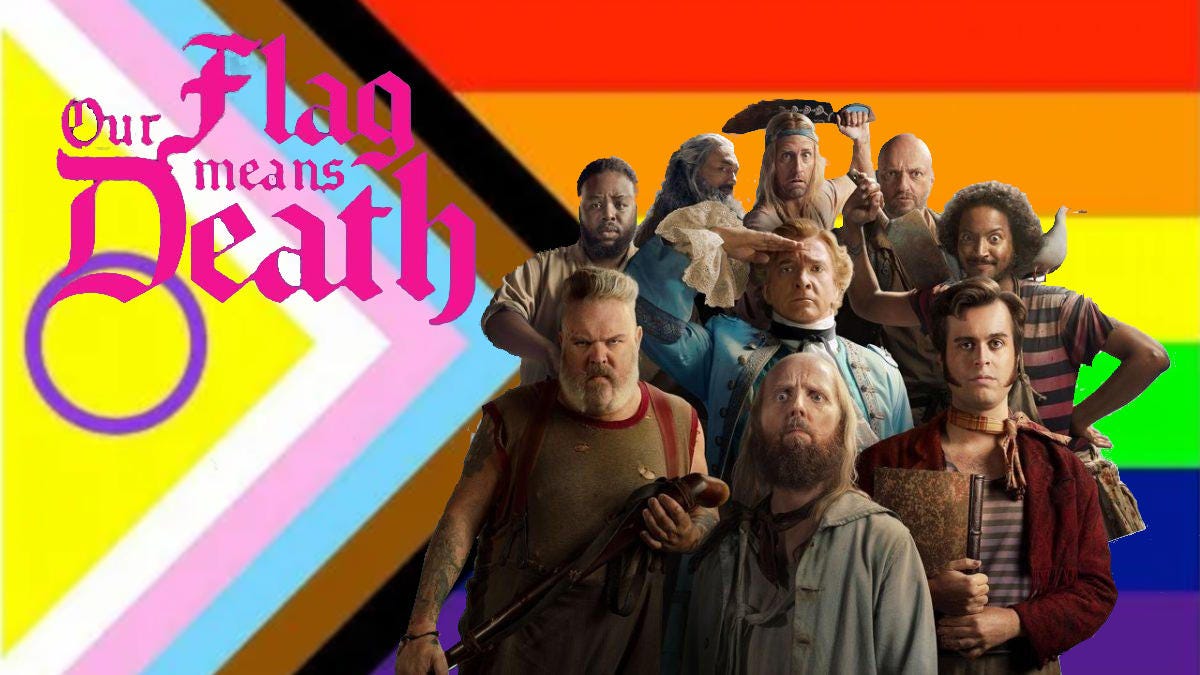
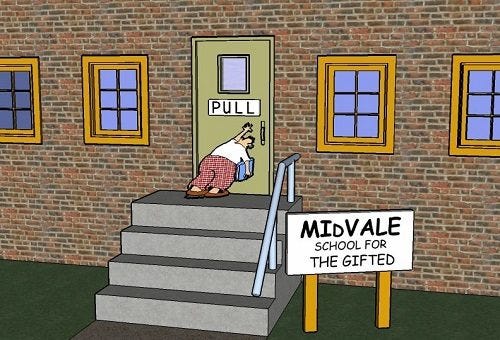

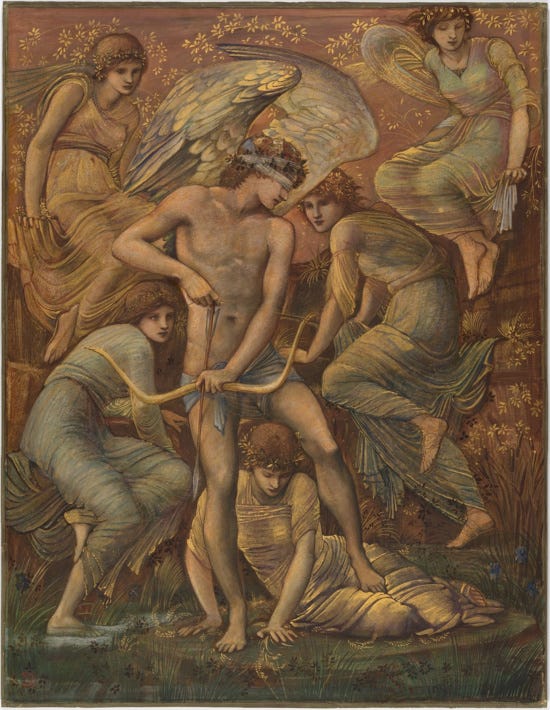

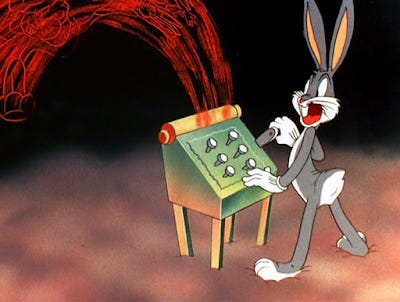

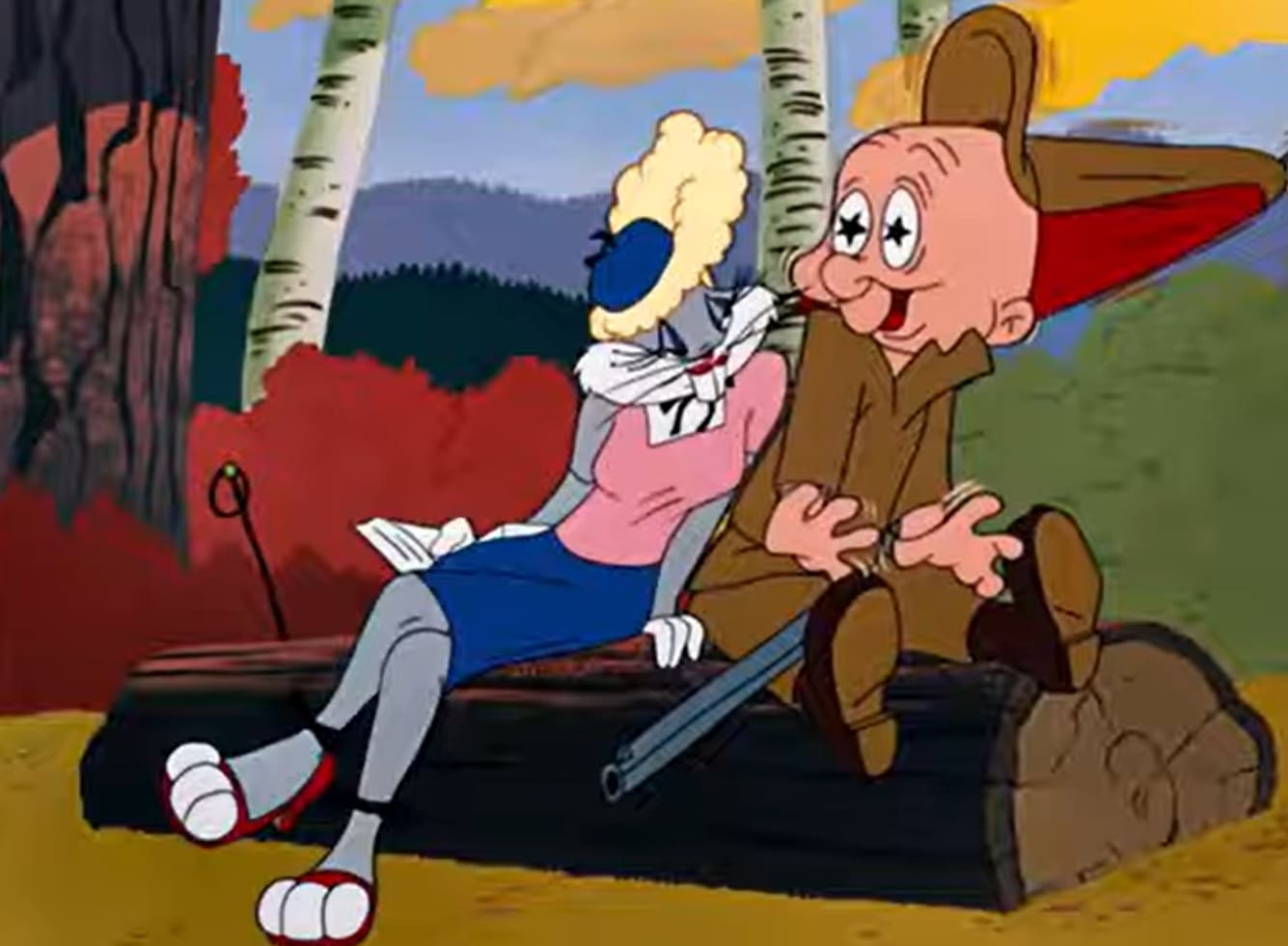

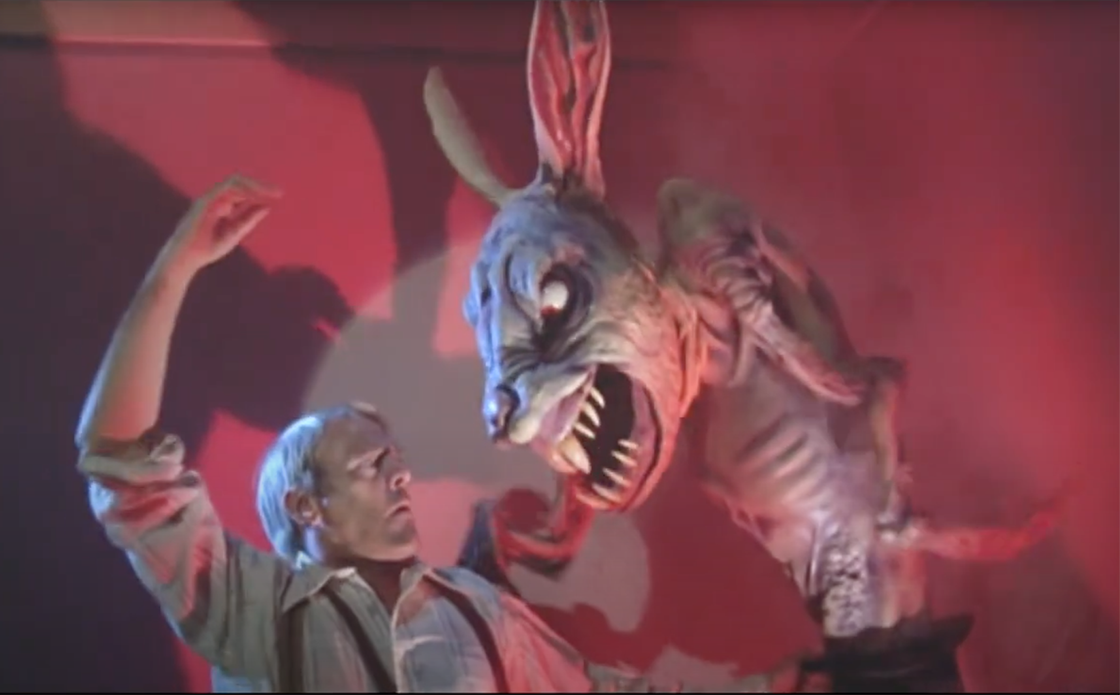

That's really interesting. I wasn't much into cartoons as a kid. I watched nature documentaries when I wanted animals and couldn't get outside (and those too were bullshit, but in a different way, as it turns out).
But when I did watch them I always thought they were a little strange. Which is not to say I didn't laugh. But they were strange. An invitation, maybe, to try on a different set of values and principles than the ones you were taught.
Bugs bunny was a dick. He does make more sense as a trickster deity. An idol and role model for the shyster, con artist, snake oil salesman. The people who have been strip mining our country and culture for a century. It tracks.
I remember it was fashionable to be outraged by the more deranged cartoons that landed in the 90s. Ren & Stimpy, Rocko, etc., but they didn't seem much different to me. All kind of monstrous, though the new ones were more overtly ugly and the adult humor less thinly veiled.
It wasn't really surprising to discover later in life that the writers and animators were often perverts, and often of a particular ethic persuasion. So I guess it should be intuitive that it didn't start in the 90s, already at 7 on the derangeometer (checking Netflix aand ...we're at 11 now).
It's a smaller thing, but a part of this teller's hatred for the forces of hell, is their perversion of things.
The owl, mere owl, rabbit mere rabbit, goat merely exceptionally disturbing man of mountains.
The difference of redwall and furries.
Evil has nothing of its own, it can only corrupt.
As for the horrors of insects and nature...
What fell when man fell?
What will lie down with what in the time to come?
With man's redemption, even too disgusting parasites?
Perhaps we underestimate the twisting of the fall.
Perhaps we underestimate the hallowing of Heaven.
Quite probably both.
There were things that one could disagree with, but mere details, a worthy stab in illusion's heart. Though, a mention, God is surely the true artist, the storyteller without compare and designer masterful above all, to make things that function even broken, even fallen, that have beauty even grotesque.
One can but hope that many torments and spells roll off the black duck's back, for few can bear to see evil in all its malice and still know hope.
Mercy then that it is blood and not understanding that saves.